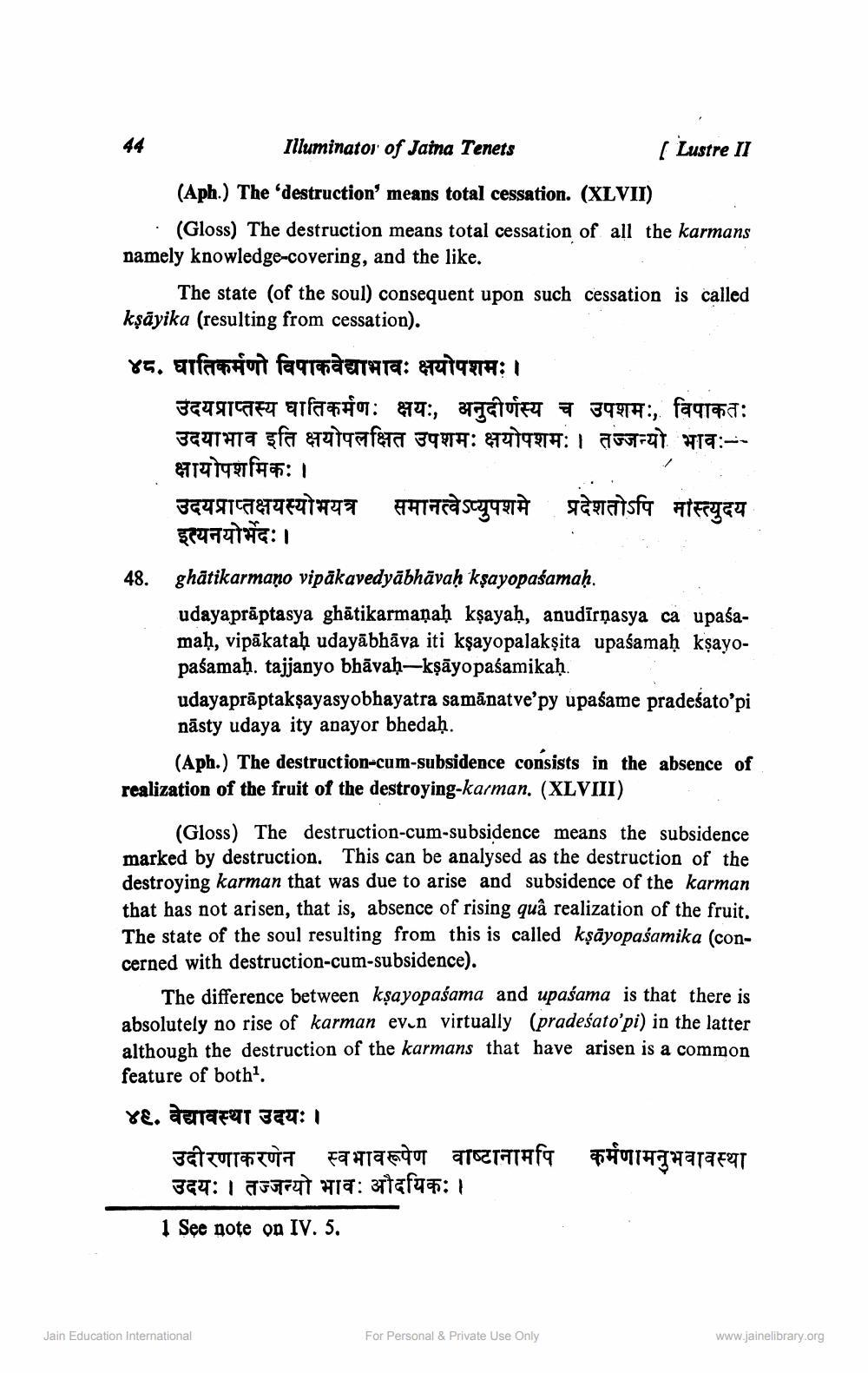________________
Illuminator of Jaina Tenets
[ Lustre II (Aph.) The 'destruction' means total cessation. (XLVII) · (Gloss) The destruction means total cessation of all the karmans namely knowledge-covering, and the like.
The state of the soul) consequent upon such cessation is called kşāyika (resulting from cessation). ४८. घातिकर्मणो विपाकवेद्याभावः क्षयोपशमः।
उदयप्राप्तस्य घातिकर्मणः क्षयः, अनुदीर्णस्य च उपशमः, विपाकतः उदयाभाव इति क्षयोपलक्षित उपशमः क्षयोपशमः । तज्जन्यो भाव:-- क्षायोपशमिकः । उदयप्राप्तक्षयस्योभयत्र समानत्वेऽप्युपशमे प्रदेशतोऽपि मास्त्युदय इत्यनयोर्भदः। ghātikarmaṇo vipākavedyābhāvaḥ kṣayopasamaḥ udayaprāptasya ghātikarmaṇaḥ kṣayah, anudīrṇasya ca upaśamaḥ, vipākataḥ udayābhāva iti kşayopalakṣita upaśamaḥ kşayopasamah. tajjanyo bhāvah-ksāyopasamikah. udayaprāptakşayasyobhayatra samānatve'py upašame pradeśato’pi nästy udaya ity anayor bhedaḥ.
(Aph.) The destruction-cum-subsidence consists in the absence of realization of the fruit of the destroying-karman. (XLVIII)
(Gloss) The destruction-cum-subsidence means the subsidence marked by destruction. This can be analysed as the destruction of the destroying karman that was due to arise and subsidence of the karman that has not arisen, that is, absence of rising quâ realization of the fruit. The state of the soul resulting from this is called kṣāyopaśamika (concerned with destruction-cum-subsidence).
The difference between kşayopaśama and upaśama is that there is absolutely no rise of karman even virtually (pradeśato'pi) in the latter although the destruction of the karmans that have arisen is a common feature of both. ४६. वेद्यावस्था उदयः।
उदीरणाकरणेन स्वभावरूपेण वाष्टानामपि कर्मणामनुभवावस्था
उदयः। तज्जन्यो भावः औदयिकः। 1 See note on IV. 5.
Jain Education International
For Personal & Private Use Only
www.jainelibrary.org




